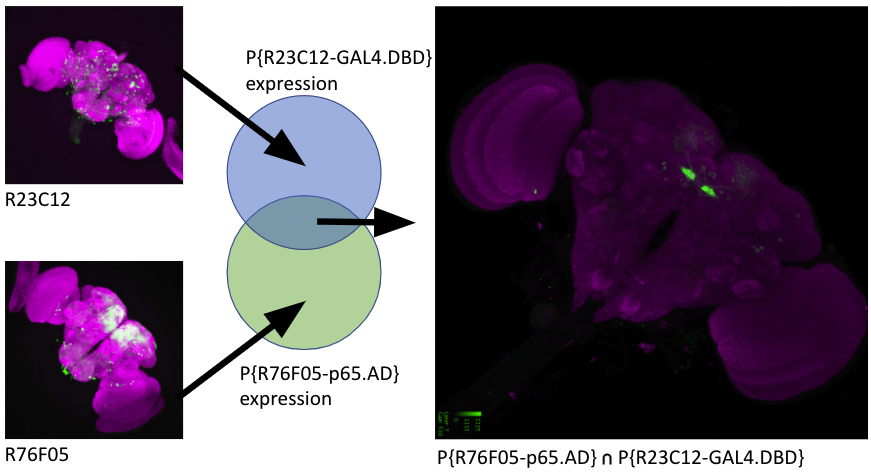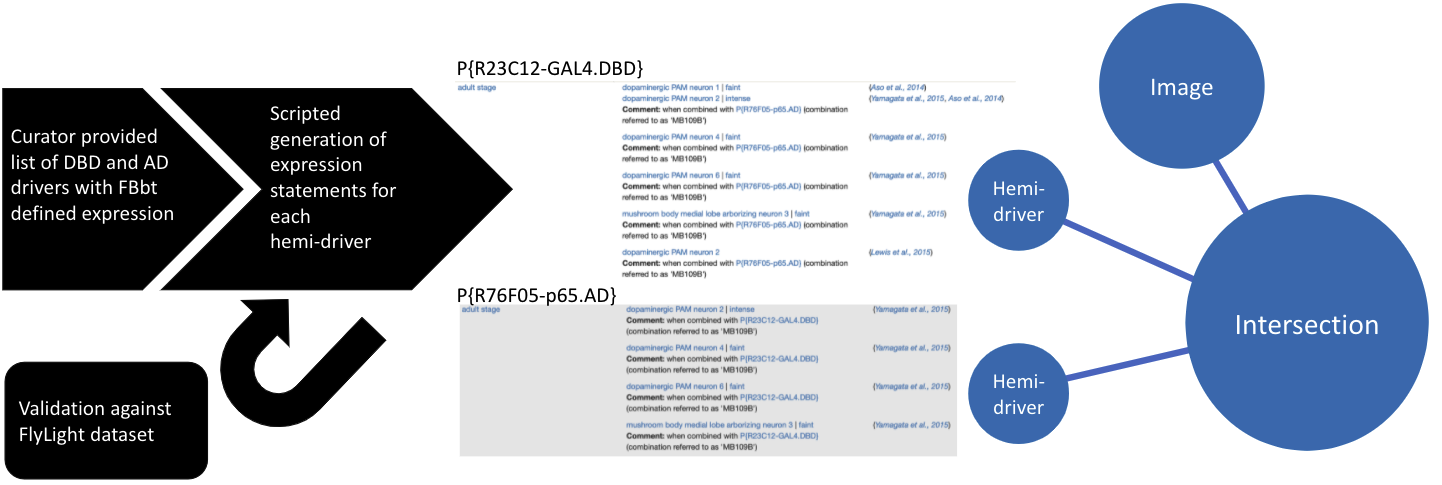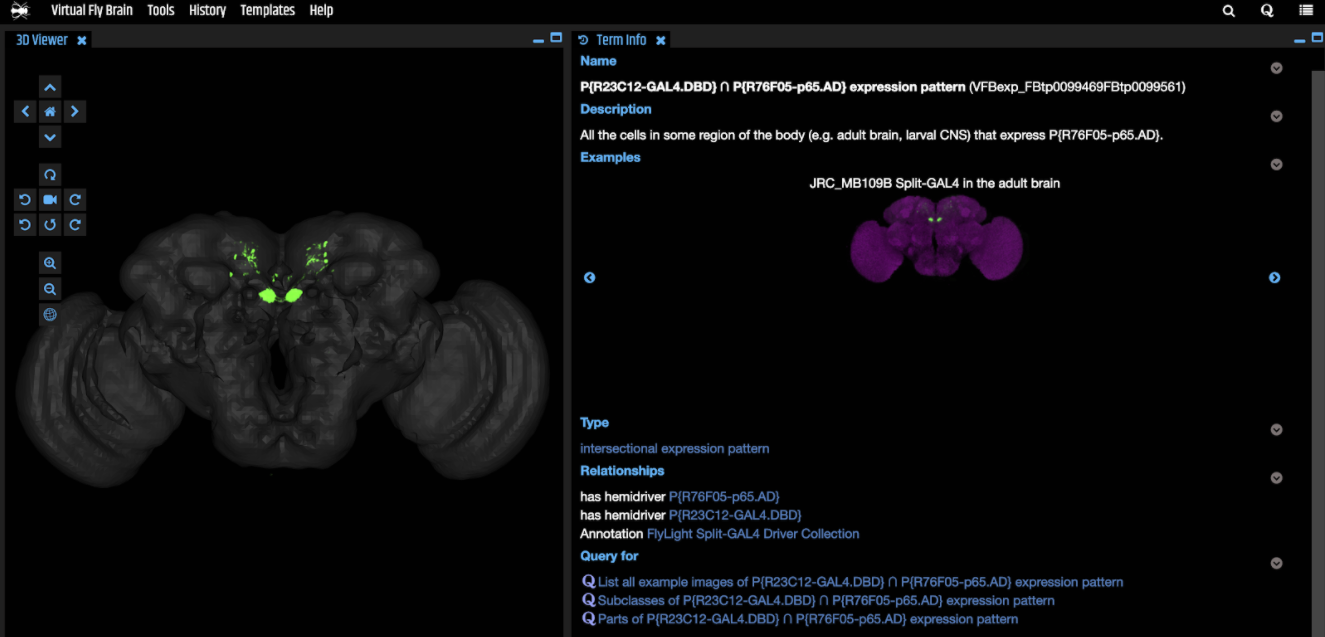Thousands of hemi-driver transgenes are now available, meaning that millions of combinations/splits are possible, each targeting some precise subset of the 10s-100s of thousands of neurons in a fly Central Nervous System (CNS). Finding the right combination for an experiment is a serious bottleneck for researchers.
FlyBase & Virtual Fly Brain (VFB) solve this problem by curating information and images recording where expression is driven by combinations of hemi-drivers. Each combination gets a standard name on VFB reflecting the names of the component hemidrivers (see figure below) and is also associated with any short names for the combination used in the literature (e.g. “P{VT017411-GAL4.DBD} ∩ P{VT019018-p65.AD} expression pattern” has_exact_synonym: SS02256")


We use programmatic methods to generate expression statements for hemi-driver combinations with FlyLight image data hosted by VFB. Combinations are validated against a local copy of the FlyLight dataset and a structured user readable comment is generated as part of the expression statement. These hyperlink to the partner hemi-driver in FlyBase, contain the strain designation (where available) and can be automatically parsed by Virtual Fly Brain to attach expression and genetic data to a node representing the intersection.
